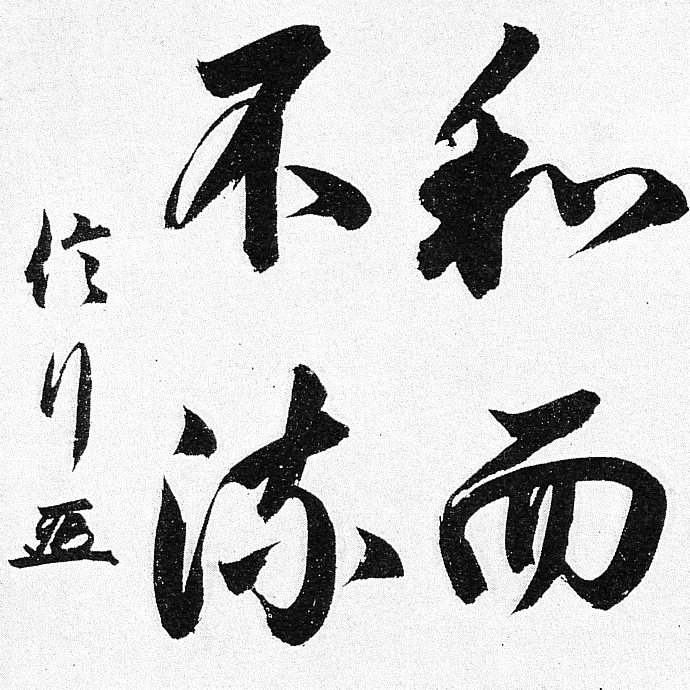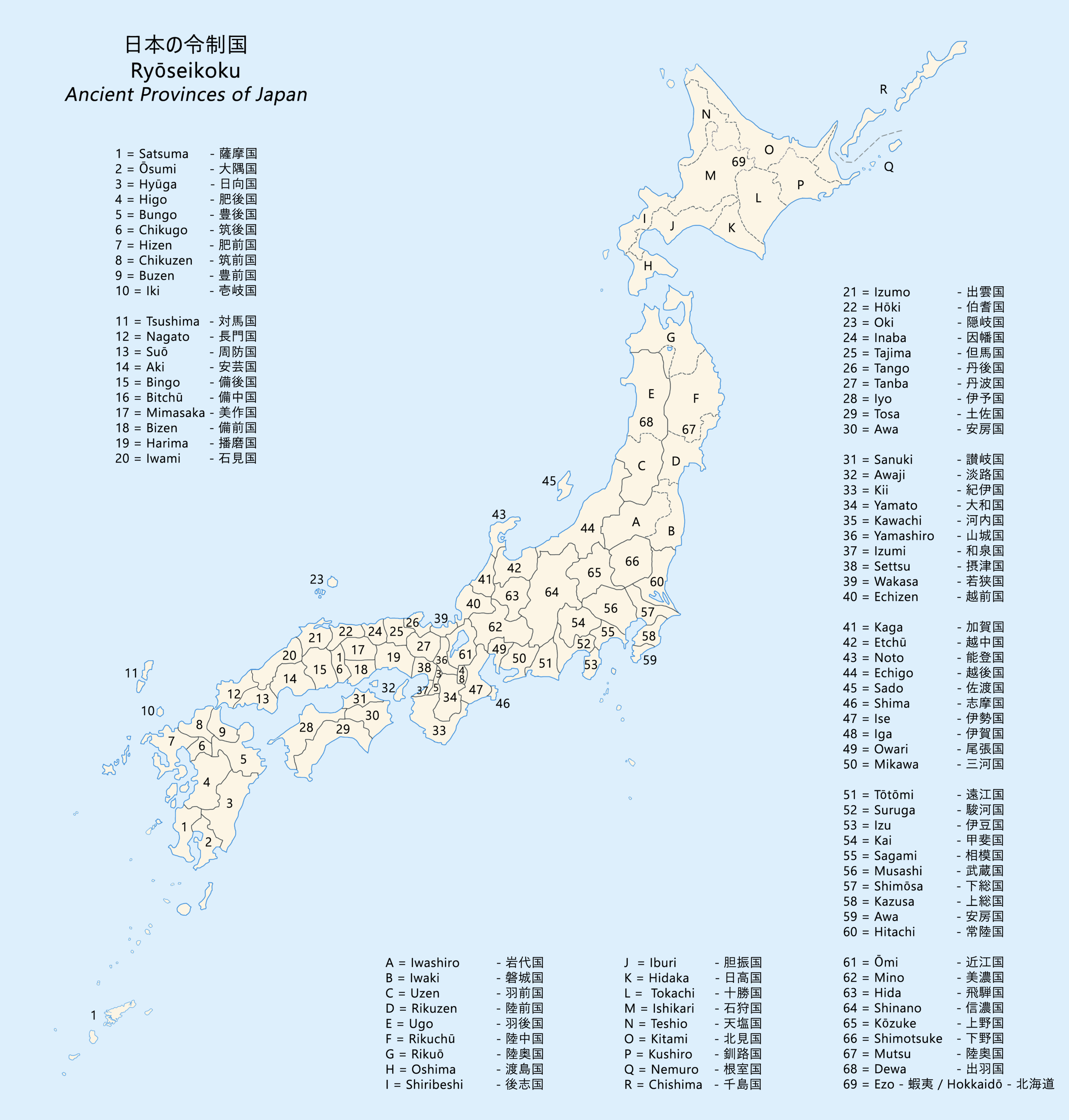|
Shodō
, also called , is a form of calligraphy, or artistic writing, of the Japanese language. Japanese writing system, Written Japanese was originally based on Man'yōgana, Chinese characters only, but the advent of the hiragana and katakana Japanese syllabaries resulted in intrinsically Japanese calligraphy styles. Styles The term shodō (書道, "way of writing") is of Chinese origin and is widely used to describe the art of Chinese calligraphy during the medieval Tang dynasty. Early Japanese calligraphy was originated from Chinese calligraphy. Many of its principles and techniques are very similar, and it recognizes the same basic writing styles: * seal script (篆書 ''tensho'') (pinyin: ''zhuànshū''). The seal script (tensho) was commonly used throughout the Zhou dynasty (1046–256 BC) and the following Qin dynasty (221–206 BC) of China. After this time period, tensho style fell out of popularity in favor of reisho. However, tensho was still used for titles of published ... [...More Info...] [...Related Items...] OR: [Wikipedia] [Google] [Baidu] |
Calligraphy
Calligraphy () is a visual art related to writing. It is the design and execution of lettering with a pen, ink brush, or other writing instruments. Contemporary calligraphic practice can be defined as "the art of giving form to signs in an expressive, harmonious, and skillful manner". In East Asia and the Islamic world, where written forms allow for greater flexibility, calligraphy is regarded as a significant art form, and the form it takes may be affected by the meaning of the text or the individual words. Modern Western calligraphy ranges from functional inscriptions and designs to fine-art pieces where the legibility of letters varies. Classical calligraphy differs from type design and non-classical hand-lettering, though a calligrapher may practice both. CD-ROM Western calligraphy continues to flourish in the forms of wedding invitations and event invitations, font design and typography, original hand-lettered logo design, religious art, announcements, graphic des ... [...More Info...] [...Related Items...] OR: [Wikipedia] [Google] [Baidu] |
Chinese Calligraphy
Chinese calligraphy is the writing of Chinese characters as an art form, combining purely Visual arts, visual art and interpretation of the literary meaning. This type of expression has been widely practiced in China and has been generally held in high esteem across East Asia. Calligraphy is considered one of the four most-sought skills and hobbies of ancient Chinese literati, along with playing stringed musical instruments, the Go (game), board game "Go", and painting. There are some general standardizations of the various Chinese script styles, styles of calligraphy in this tradition. Chinese calligraphy and Ink wash painting, ink and wash painting are closely related: they are accomplished using similar tools and techniques, and have a long history of shared artistry. Distinguishing features of Chinese painting and calligraphy include an emphasis on motion charged with dynamic life. According to Stanley-Baker, "Calligraphy is sheer life experienced through energy in motion tha ... [...More Info...] [...Related Items...] OR: [Wikipedia] [Google] [Baidu] |
Japanese Calligraphy Inkstone
Japanese may refer to: * Something from or related to Japan, an island country in East Asia * Japanese language, spoken mainly in Japan * Japanese people, the ethnic group that identifies with Japan through ancestry or culture ** Japanese diaspora, Japanese emigrants and their descendants around the world * Japanese citizens, nationals of Japan under Japanese nationality law ** Foreign-born Japanese, naturalized citizens of Japan * Japanese writing system, consisting of kanji and kana * Japanese cuisine, the food and food culture of Japan See also * List of Japanese people * * Japonica (other) * Japanese studies , sometimes known as Japanology in Europe, is a sub-field of area studies or East Asian studies involved in social sciences and humanities research on Japan. It incorporates fields such as the study of Japanese language, history, culture, litera ... {{disambiguation Language and nationality disambiguation pages ... [...More Info...] [...Related Items...] OR: [Wikipedia] [Google] [Baidu] |
Shuin Being Made In Zentsuji - Kagawa - 2021 April 1
---- A , also called "Go-shuin (御朱印)" as an honorific, is a seal stamp given to worshippers and visitors to Shinto shrines and Buddhist temples in Japan. The seal stamps are often collected in books called that are sold at shrines and temples. The stamps are different from commemorative stamps in that they are made by people who work at the shrines or temples: Shinto ''Kannushi or Buddhist Hōshi''. To create the shuin, the writer presses down one or more large stamps, and then uses black ink to write, in their distinctive calligraphy, the day of the visit, the name of the shrine or temple, as well as sometimes the names of the relevant Kami or Buddhist deities, and other messages. There are various theories about the origin of shuin, though the strongest is that it was a receipt for a dedicated copied sutra. There are still temples where one cannot receive a shuin without having donated a sutra or money, but the majority of temples will now accept a small amount of ... [...More Info...] [...Related Items...] OR: [Wikipedia] [Google] [Baidu] |
Cursive Script (East Asia)
Cursive script (; , ''sōshotai''; , ''choseo''; ), often referred to as ''grass script'', is a script style used in Chinese and East Asian calligraphy. It is an umbrella term for the cursive variants of the clerical script and the regular script. The cursive script functions primarily as a kind of shorthand script or calligraphic style and is faster to write than other styles, but it can be difficult to read for those unfamiliar with it because of its abstraction and alteration of character structures. People who can read only standard or printed forms of Chinese or related scripts may have difficulty reading the cursive script. Names The character primarily means "grass", and the character means script in this context, which has led to the literal calque for as "grass script". However, can be extended to mean "hurried" or "rough", from which the name came. Thus, the name of this script is literally "draft script", "quick script" or "rough script". The character ... [...More Info...] [...Related Items...] OR: [Wikipedia] [Google] [Baidu] |
Semi-cursive Script
Semi-cursive script, also known as running script, is a style of Chinese calligraphy that emerged during the Han dynasty (202 BC220 AD). The style is used to write Chinese characters and is abbreviated slightly where a character's strokes are permitted to be visibly connected as the writer writes, but not to the extent of the cursive style. This makes the style easily readable by readers who can read regular script and quickly writable by calligraphers who require ideas to be written down quickly. In order to produce legible work using the semi-cursive style, a series of writing conventions is followed, including the linking of the strokes, simplification and merging strokes, adjustments to stroke order and the distribution of text of the work. One of the most notable calligraphers who used this style was Wang Xizhi (303–361). Wang is known for the '' Lantingji Xu'' ('Preface to the Orchid Pavilion Collection'), a work published in 353 which remains highly influenti ... [...More Info...] [...Related Items...] OR: [Wikipedia] [Google] [Baidu] |
Muromachi Period
The , also known as the , is a division of Japanese history running from approximately 1336 to 1573. The period marks the governance of the Muromachi or Ashikaga shogunate ( or ), which was officially established in 1338 by the first Muromachi ''shōgun'', Ashikaga Takauji, two years after the brief Kenmu Restoration (1333–1336) of imperial rule was brought to a close. The period ended in 1573 when the 15th and last shogun of this line, Ashikaga Yoshiaki, was driven out of the capital in Kyoto by Oda Nobunaga. From a cultural perspective, the period can be divided into the Kitayama and Higashiyama cultures (later 15th – early 16th centuries). The early years from 1336 to 1392 of the Muromachi period are known as the or Northern and Southern Court period. This period is marked by the continued resistance of the supporters of Emperor Go-Daigo, the emperor behind the Kenmu Restoration. The Sengoku period or Warring States period, which begins in 1465, largely overlaps ... [...More Info...] [...Related Items...] OR: [Wikipedia] [Google] [Baidu] |
Kamakura Period
The is a period of History of Japan, Japanese history that marks the governance by the Kamakura shogunate, officially established in 1192 in Kamakura, Kanagawa, Kamakura by the first ''shōgun'' Minamoto no Yoritomo after the conclusion of the Genpei War, which saw the struggle between the Taira clan, Taira and Minamoto clan, Minamoto clans. The period is known for the emergence of the samurai, the warrior caste, and for the establishment of feudalism in Japan. There are various theories as to the year in which the Kamakura period and Kamakura shogunate began. In the past, the most popular theory was that the year was 1192, when Minamoto no Yoritomo was appointed . Later, the prevailing theory was that the year was 1185, when Yoritomo established the , which controlled military and police power in various regions, and the , which was in charge of tax collection and land administration. Japanese history textbooks as of 2016 do not specify a specific year for the beginning of the K ... [...More Info...] [...Related Items...] OR: [Wikipedia] [Google] [Baidu] |
Lotus Sutra
The ''Lotus Sūtra'' (Sanskrit: ''Saddharma Puṇḍarīka Sūtram'', ''Sūtra on the White Lotus of the True Dharma'', zh, p=Fǎhuá jīng, l=Dharma Flower Sutra) is one of the most influential and venerated Buddhist Mahāyāna sūtras. It is the main scripture on which the Tiantai along with its derivative schools, the Japanese Tendai and Nichiren, Korean Cheontae, and Vietnamese Thiên Thai schools of Buddhism were established. It is also influential for other East Asian Buddhist schools, such as Zen. According to the British Buddhologist Paul Williams, "For many Buddhists in East Asia since early times, the ''Lotus Sūtra'' contains the final teaching of Shakyamuni Buddha—complete and sufficient for salvation." The American Buddhologist Donald S. Lopez Jr. writes that the ''Lotus Sūtra'' "is arguably the most famous of all Buddhist texts," presenting "a radical re-vision of both the Buddhist path and of the person of the Buddha." Two central teachings ... [...More Info...] [...Related Items...] OR: [Wikipedia] [Google] [Baidu] |
Heian Period
The is the last division of classical Japanese history, running from 794 to 1185. It followed the Nara period, beginning when the 50th emperor, Emperor Kammu, moved the capital of Japan to Heian-kyō (modern Kyoto). means in Japanese. It is a period in Japanese history when the Chinese influence on Japanese culture, Chinese influences were in decline and the national culture matured. The Heian period is also considered the peak of the Japanese Emperors of Japan, imperial court, noted for its Japanese art, art, especially Japanese poetry, poetry and Japanese literature, literature. Two syllabaries unique to Japan, katakana and hiragana, emerged during this time. This gave rise to Japan's famous vernacular literature, with many of its texts written by court ladies who were not as educated in Chinese as their male counterparts. Although the Imperial House of Japan had power on the surface, the real power was in the hands of the Fujiwara clan, a powerful Kuge, aristocratic family wh ... [...More Info...] [...Related Items...] OR: [Wikipedia] [Google] [Baidu] |







